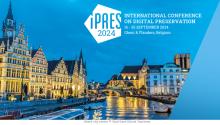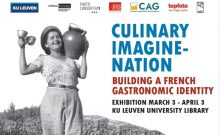The conference, organised by the International Association of Photography and Theory, will be held between 2-4 December 2016, at NiMac, Nicosia, Cyprus.
Keynote Speakers: Martha Langford, John Stezaker, Lucia Nimcova
Research in historical, artistic and vernacular photography has been rapidly expanding in the past few years. Responding to this trend, the International Conference of Photography and Theory (ICPT) was created with the aim to provide an outlet for an interdisciplinary and critical theoretical exploration of photography and photographic practices. The 4th International Conference of Photography and Theory (ICPT2016) aims once again at bringing together researchers and practitioners from diverse fields of study, who share a common interest in photography. This year’s topic, ‘Photography and the Everyday’ investigates the current meanings, distribution, materiality, impact, and affect of vernacular photography (or else everyday photography) in relation to our economy of images. Furthermore, it aims to examine the ways vernacular photography influences, shapes and challenges memory, individual and collective identities, historical and other narratives, the social fabric, issues of authorship and authenticity, privacy and public life.

With the advent of the digital era, an unprecedented volume of photographs are being produced, shared and distributed, perhaps signalling a shift in our engagement with vernacular photography. Smartphones, tablets, social media and photo-sharing applications seem to have altered our economy of images, making everyday photography more immediate, accessible, shareable and visible than ever. The ease of taking vernacular photographs has resulted in fleeting, temporal, and what they are often described as ‘superficial’ images. However, the growing and overpowering number, the viral nature, and often personal – yet universally – understood content of such images cannot be easily dismissed. More so, online photographic collections have established a diverse and flexible channel for exchange of both images and discourse around everyday photography, whilst producers and consumers of photographic images have assumed curatorial roles over these collections.
CALL FOR PAPERS
The Call for Papers was open until 30 June 2016 for submissions from various disciplines, such as: photography, art history and theory, visual sociology,anthropology, museology, philosophy, ethnography, cultural studies, visual and media studies, communications, and fine and graphic arts. Submitted proposals for presentations should address, but are not limited to one or more of the following:
Vernacular, Snapshot and Everyday Photography
- The nature of everyday photography: producing, collecting, displaying, categorizing and distributing the everyday image
- The ephemeral nature of everyday photography
- Found vernacular photography: issues of privacy and ownership
- The Digital Archive: a new materiality
- Personal photo album vs a shared public database
- Redefining the family album
- The digital rebirth of the surveillance society
Traces of Memory & Identity
- Everyday image: memory, place and everyday life
- The indexical nature of everyday digital photography
- Digital memory: a fluid strand of memory
- Sharing photographs online: constructing family and private life
- Empowering through vernacular photography
- Producing and consuming photographic images
The Effect of Photo-Sharing Applications & Social Networks
- From Polaroid to Instagram
- The Selfie phenomenon
- Digital Photographic collections and communities: formulating, participating and social tagging
- Collaborative photographic practices and experiences
- Everyday photographic production and photo-sharing as a social process
- Photo Diary/Weblog/Photostreams as narratives
- Politics, revolutions and propaganda of photo-sharing
Art and Everyday Photography
- The everyday/snapshot aesthetic in art photography
- Artists’ use of everyday photography – found or (re)created
- Issues of appropriation and assimilation
- The personal and collective in everyday photography
- Curating the vernacular
- Simulating and performing the vernacular
For any further information please visit the website http://photographyandtheory.com/






 If you have interesting news and events to point out in the field of digital cultural heritage, we are waiting for your contribution.
If you have interesting news and events to point out in the field of digital cultural heritage, we are waiting for your contribution.
























